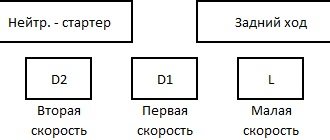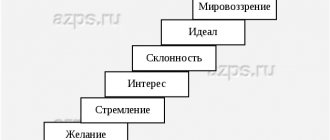Issues discussed in the material:
- What is Kaizen?
- What are the key principles of Kaizen?
- How did the Kaizen system come about?
- What results can be expected when implementing a Kaizen system in an enterprise?
- How to implement the Kaizen system in an enterprise?
Today, Japanese manufacturers hold leading positions in various industries, and therefore Japan ranks fourth in the world ranking of countries in terms of GDP. Many attribute success to the increased efficiency of the Japanese, as well as the application of the right management strategy. In this article we will talk about what the Kaizen system is in an enterprise, whether it can actually lead to similar results, what its basic principles are and how to implement it in a company.
What is Kaizen
Kaizen refers to a specific Japanese philosophy or practice that places emphasis on continuous improvement of production processes, optimization of management, and enhancement of various aspects of employee life. The Japanese themselves consider the system a way to properly organize production and establish interaction between employees in order to achieve success. Kaizen is suitable for any area of business, government, and even everyday life.
1. Kaizen philosophy.
Practices effectively implemented in Japan are based on success-oriented principles. According to its followers, the workplace of each employee demonstrates his thinking abilities, which directly affects work efficiency. In the Kaizen system, the enterprise uses five rules to help organize working time and space, which are called “5S”.
- Seiri – neatness. This rule involves excluding all unnecessary details and processes from the workspace.
- Seiton - order. All tools used in the workplace must be correctly and clearly distributed. Changes are allowed only in order to optimize work processes.
- Seiso – purity. It is important to keep your work area clean.
- Seiketsu - standardization. The organization of the workplace and production processes is carried out in accordance with strict rules.
- Shitsuke – discipline. This rule, which does not allow deviations, implies strict compliance by employees with the rules of the enterprise.
2. Psychology of Kaizen.
Japanese philosophy can be effectively applied not only in professional but also in personal life. Psychologists from various countries have come to this opinion. This is due to people’s fear of significant changes, while the use of the Kaizen system in an enterprise and not only involves taking small steps leading to success, which, on the contrary, will instill self-confidence in a person, encouraging them to make more efforts, use rational and creative thinking.
TQM principles
One of the founders of the TQM movement, Professor Kaoru Ishikawa, formed six features of total quality management in Japan:
- TQM is applied throughout the company with the participation of all employees.
- The importance of education and training.
- Work of QC circles.
- Regular TQM audits by senior management or external organizations.
- Use of statistical methods.
- State support for TQM.
The Total Quality Management methodology contrasts sharply with the approaches of traditional quality management:
| Principles of traditional quality management | TQM principles |
| Customer satisfaction | Satisfaction of consumers, employees and society as a whole |
| Actions to improve product quality | Actions to improve the quality of processes and systems |
| Corrective impact on quality | Preventive impact on quality |
| Quality management training for quality control department employees only | Quality management training for all employees |
| Only the quality control department is responsible for quality | All employees are responsible for quality |
| Solving only urgent quality problems, “plugging holes” | Finding and solving chronic problems |
| Dedicated solution to quality problems | Employee interaction when solving quality problems |
W. Edwards Deming was directly involved in the formation of the TQM concept. He formulated a 14-point algorithm of actions for implementing the TQM concept:
- Ensure consistency in product and service improvement goals.
- Adopt a new philosophy.
- Eliminate reliance on inspections to achieve quality.
- Stop choosing partners solely based on price. Instead, reduce your overall cost by working with a single supplier.
- Continually and forever improve every planning, production and service process.
- Introduce on-the-job training.
- Encourage leadership.
- Get rid of fears.
- Break down barriers between staff from different functional areas.
- Eliminate slogans, appeals and workforce targets.
- Eliminate numerical quotas for the workforce and numerical targets for managers.
- Remove barriers that prevent people from taking pride in workmanship and eliminate annual rankings or merit systems.
- Organize a vigorous training and self-improvement program for everyone.
- Engage everyone in the company in the transformation effort.
Key principles of Kaizen
- Focus on customers - the use of the Kaizen system in an enterprise assumes that satisfying customer needs through the products/services offered is placed in one of the first places.
- Continuous changes - this principle involves making continuous small changes in all areas of the enterprise or life itself (supply, production, sales, personal relationships, etc.).
- Openly acknowledging problems. Improvement is impossible if there are no problems. For example, a complaint is seen as a gift, because thanks to it, the management of the enterprise has the opportunity to learn about the existence of a problem and a chance to improve the quality of the product or service. Without paying attention to the complaint, this opportunity can be missed. The use of the Kaizen system in an enterprise requires an open discussion of existing difficulties.
- Creation of work teams - the use of the Kaizen system at an enterprise assumes that each employee is a member of the work team and the corresponding quality circle (newcomers are accepted into the “first-year” club).
- Project management using cross-functional teams - the use of this principle of the Kaizen system in an enterprise assumes that effective actions of a particular team are impossible if it works within one functional group. This rule is closely related to the inherent rotation of Japanese management.
- Formation of “supportive relationships” - for a company, in addition to achieving financial results, the involvement of employees in its activities is essential, as well as the presence of good relationships between employees, since they will inevitably (albeit in the delayed perspective) lead the company to excellent results.
- Horizontal development – the personal experience of employees is considered as the asset of the entire enterprise.
- Development of self-discipline - the Kaizen system at the enterprise assumes that employees control and respect not only themselves, but also other employees, as well as the company as a whole.
- Self improvement. The principle is to train yourself to decide on issues for which responsibility lies with you personally, and not with those for which other employees are responsible, and to solve your own problems first.
- Informing each employee - the system assumes that all employees must have complete information about the enterprise where they work.
- Delegation of authority to each employee - consists of transferring a certain amount of authority to each of the employees, training in a variety of specialties, mastery of a wide range of skills and abilities, etc.
- Management – presupposes planning and comparison of the obtained result with a given plan.
- Conducting an analysis of what is happening in the enterprise and taking actions based on facts (the conclusions must be based on reliable data).
- Eliminating the main cause of defects and preventing relapses (do not confuse the cause of the problem with its manifestation).
- The desire to build quality into the process as early as possible (inspection does not create quality).
- Standardization (it is necessary to use methods that allow you to consolidate the successful results obtained).
Technology and features of Kaizen
Any business includes several processes. Most often this is production, accounting, communication with clients and suppliers, and customer service. To optimize, pay attention to each point. If something is ignored, production efficiency will decrease. To avoid this, notice even the little things.
Improving your workflow starts with breaking it down into steps. Then consider each stage separately. Perhaps there is something superfluous here. Let's say an enterprise needs to optimize production. The main goal is to keep employees busy. They should work and not pretend to be busy. You also need to take care of the marketing of finished products.
In this case, optimization according to the Kaizen system will be carried out in 9 stages.
Problem Definition
In many organizations, it is not customary to discuss problems out loud. Several people know about them, who ultimately make a decision. Because of this, new information reaches employees later or in a distorted form. This greatly affects efficiency.
Every enterprise has difficulties. But they cannot be hushed up. They need to be discussed and put on display. Otherwise the problem will remain a problem.
Cost Analysis
Where are resources spent in the production process?
- Extra movements. Often workers have to move around the workshop a lot in search of the right material.
- Defects. It happens that at the initial stage of production they are overlooked. It takes effort and money to eliminate them. It is better to resolve such issues at the very beginning.
- Surplus. If the production volume is greater than the sales volume, the remaining balance is stored in the warehouse. This is another expense item.
Don't forget about temporary resources. Every part of production takes time. Those workers who can reduce them have an advantage.
Employees' opinion
It's worth listening to him. Henry Ford said that he owed the company's success to its employees. It was their ideas that he implemented. People were interested in improving production because they knew that suggestions were generously encouraged.
In order for staff to participate in the development of the company, they need motivation. Few employers understand this. As a result, employees do their work automatically, without thinking about what will happen next.
The Kaizen system encourages managers to listen to suggestions even when they seem insignificant. Employees should be given the opportunity to voice ideas, bring them to life, tell colleagues about them, and receive incentives.
Elimination of defects
There will be disadvantages with any management method. And, it would seem, the fight against them is the main operating principle of all companies. However, in reality this is not the case. Often employees and management know about the problem, but do not even try to fix it. Over time, this attitude towards business will end in its collapse. 3 rules will help you avoid such consequences:
- A broken item isn't that important - throw it away.
- A broken thing is needed - repair it.
- What is not working at full capacity is worth improving.
Remember: laziness and unwillingness to grow are not the best qualities of a businessman.
Saving
According to managers, savings can only be made on wages. The Kaizen system refutes this statement. You can save money by upgrading old equipment or replacing it with new ones.
Focus on customers
Often this point is not taken into account. Although it depends on how successful the business idea will be. It is important to take into account customer opinions about product quality, price or features.
Creation of working groups
Groups will be responsible for quality. They will help team members feel important and give them motivation to work even more efficiently. This is a great way to increase employees' desire to improve.
Creation of standards
We are talking about quality standards. The Kaizen system recommends establishing and complying with them. Difficulties that arise during the work process should be recorded on paper. Each employee should have instructions on how to act in unforeseen situations. It is important that the enterprise develops a quality management system (QMS).
Conclusions and facts
It is logical that conclusions are based on facts. Trust only real information, not hypotheses and theories.
How did the Kaizen system come about?
The world first learned about the principles of the Kaizen system thanks to the Japanese Masaaki Imai, who wrote and published a book in England in 1986 called “Kaizen: the key to the success of Japanese companies.” In 1997, Masaaki’s second book, “Gemba Kaizen: The Path to Reducing Costs and Improving Quality,” was published, which talked about production aspects (genba, or gemba, means the place where products are directly manufactured, be it a workshop, an office, a laboratory) in the Kaizen system.
As for Imai himself, he is the founder of a consulting company, worked for many years in the field of recruiting and personnel selection, created the Kaizen Institute, which teaches management using the Kaizen system, and also provides consulting assistance to organizations implementing this system. philosophy.
Currently, you can find a huge number of articles and manuals, textbooks telling about the Kaizen system in an enterprise; they are based on both the books of Masaaki Imai and the experience of companies that have implemented the system in their activities.
The main idea of the system is to focus production primarily on the needs of the client. Satisfying the needs and requirements of customers contributes to increasing profits.
At the same time, the Kaizen system involves enterprises recognizing the existence of certain problems (the Kaizen philosophy believes that there are no companies without any problems) and restructuring the system of consciousness of employees in such a way that they work not out of fear of receiving fines for mistakes made, but in an effort to avoid them. admit.
Concept and rules of Gemba Kaizen
This is one of the main tools of lean manufacturing according to the Kaizen system. The word gemba means a real place. This could be a construction site, a production workshop, etc.
Gemba Kaizen involves improving workplaces, which will have a beneficial effect on the work of the company or production as a whole. Here you need to adhere to 5 rules:
- To resolve the problem, visit your workplace. This way you will get reliable information about what went wrong. You will also make the most appropriate decision.
- Determine what the problem is. This could be a person, equipment, materials, method of work, calculations.
- To prevent the situation from getting worse, find a temporary solution.
- Find the root cause of what happened.
- To avoid similar situations in the future, record the essence of the problem and its solution on paper.
These rules of the Kaizen system protect against stressful situations and production problems. They also help prevent unnecessary waste of time and money.
What goals does Kaizen achieve in an enterprise?
The main purpose of using the Kaizen system in an enterprise is continuous improvement, continuous improvement of various processes. Achieving this ultimate goal is achieved through:
- increasing productivity;
- improving product quality;
- logistics improvements;
- reducing unnecessary and wasteful spending;
- inventory reduction;
- increasing the readiness of production assets;
- increasing employee motivation;
- team building;
- increasing employee responsibility;
- corporate management style;
- smoothing hierarchy;
- continuous professional development of employees at each level.
Read more about what the Kaizen system consists of
- List of changes.
- Setting priorities and order.
In accordance with the Kaizen system, the enterprise first determines the nuances that are necessary to improve operational efficiency. You need to make a list of what can affect the reduction of financial, time and other costs. Even such points as tools at employee workplaces are listed, arranged in a certain order, helping to increase the speed of work. At the same time, changes may concern not only jobs and business processes, but also the habits of workers.
For example, a person who is accustomed to checking his email inbox at least twenty times a day is unlikely to be able to achieve a high concentration of attention. However, you can introduce a new rule into your life, according to which you set aside a certain time to check your mail two or three times a day. Some tasks turn out to be completely meaningless, which means they can be excluded from work processes.
A rule of mathematics states that rearranging terms does not affect the final sum. However, it does not apply to work processes in which the order in which certain actions are performed matters. For example, the highest performance in people is observed soon after waking up. Accordingly, the first working hours should be devoted to solving the most complex problems. And some tasks should be abandoned altogether. It would also be a good idea to think about the optimization and sequence of their solution - what needs to be done first and what needs to be done second.
For example, an employee needs to travel to the other end of the city to resolve business issues. At the same time, it would be more reasonable to plan to complete a number of tasks there at once, eliminating the need to drive back and forth ten times, wasting not only time, but also energy and money on travel. You can organize things by using the timekeeping technique, which involves recording all the tasks being performed, indicating the time of their completion. After reviewing such records, you can find that most of the time is spent on solving secondary issues, while priority tasks may suffer.
What results can be expected from the Kaizen system in an enterprise?
Modern trends include increased competition and consumer demands. But it is worth understanding that the use of the Kaizen system in an enterprise is a long-term project that is implemented in the life of the company and its employees constantly and every day, without allowing breaks for a week or a month, since they are fraught with rollbacks to the initial level. In order to always be at least one step ahead of your competitors, improvements should be made daily. Keep in mind that earnings will not improve immediately based on the current quarter's results.
However, using the system over a longer period will lead to an improvement in productivity of 50-100%, or even more. Constant implementation of actions aimed at improving operational efficiency over many years will allow the company to always be ahead of its competitors and occupy a leading position in the market. An excellent example is Toyota, which has been following the Kaizen concept for over 70 years.
Each of the improvements, considered individually, may not be grandiose, but it is the small steps taken together that lead to significant strategic victories. In conventional organizations, employees simply carry out the work assigned to them every day, while in enterprises using the Kaizen system, an employee, noticing an opportunity to improve his work, implements changes leading to such improvement in his life. The use of the system allows companies to operate effectively even with a smaller staff compared to competitors (by 10–20%, and sometimes by 50%).
Often, such changes require no investment at all; people just need to focus on their own work and think about ways to improve it.
In the seventies of the last century, among the leaders of Toyota there was a talented top manager - Taiichi Ohno, who was confident that all subordinates had the necessary strength and talent, and if they had the authority, they would be able to cope with any problems. He used this approach very often. For example, the company's goal was to produce 100 units per hour.
In this case, Ono provided the engineers with the amount of resources that made it possible to produce only 90 units, but required 100. Since it was impossible to immediately fulfill this order, the employees had two options - overtime work or introducing improvements into the process that would allow to cope with the task 100%.
Once the engineers were able to solve the problem, 10% of the workers were removed from that production area and transferred to another line. Those who remained were again tasked with producing 100 units of product.
Increases training efficiency
So, set yourself a goal, for example, to do the splits in three months. Determine a time when it is convenient for you to study. Consult a trainer or download a mobile app that will suggest stretching exercises. Strictly follow the training schedule, make development a habitual state and devote time to training every day. If you don’t want to work alone, find yourself a partner – it’s always easier in a team.
Photo: istockphoto.com
You shouldn't exercise in a bad mood. A positive attitude towards “production” is the basis of the Kaizen philosophy. An equally important component is encouragement; don’t forget to praise yourself. After all, even a small workout, even five minutes, is better than nothing. And after a while it will become a habit.
By regularly devoting time to exercise, you can truly achieve success. Scientists from the University of Utah, USA, conducted a study and found that the quality and intensity of training is more important than its duration. High daily exercise lasting less than 10 minutes reduces the risk of obesity by 5% in women and by 2% in men.
Countdown: 8 steps to a healthy body
How to implement the Japanese system? Kaizen blitz to the rescue!
The implementation of the Kaizen system in an enterprise is designed for a long time, but there are options in which improvements can be achieved quite quickly. Kaizen blitz is the name of a practical seminar designed to achieve radical changes in a short time, improving results and performance. The work is designed to involve all company personnel to help create an efficient working machine. With the help of a kaizen blitz, you can immediately verify the effectiveness of activities and changes made.
Conducting a kaizen blitz:
| Stages | Term |
| #1: Planning and Preparation | |
| 0.5-2 days |
| No. 2. Conducting a kaizen blitz | |
Initial acquaintance consists of:
| 1 day (1-3 hours) |
Understanding the real situation is as follows:
| 1-2 days (3 hours each + additional time required to collect information) |
Implementation of improvements consists of:
| 2 days (3 hours each) |
| No. 3. Presentation of results | |
At this stage:
| 2-3 days (1.5 hours each) |
| Total time: 7–13 days |
Nuances of people management using Kaizen
The Kaizen system at the enterprise is human-oriented. Japanese management places the employee's attitude towards work at the forefront. They cannot be punished or given orders. They need to be supported and encouraged (Western management is based on the “carrot and stick” method). Employees are consulted; management’s task is to help subordinates, explain, teach, and jointly make certain decisions. The goal is to increase internal motivation, value and commitment to the organization, to ensure 100% efficiency of employees, and to search (either independently or in small groups) for what and how can be improved.
Don't be afraid of mistakes. Managers, on the other hand, encourage employees to act and make mistakes because this way they gain experience.
- You should not think WHY this cannot be done. On the contrary, you need to think about HOW to do it.
- There is no need to apologize, you need to start.
- Errors must be corrected immediately.
- You shouldn't waste money on Kaizen, it's better to use your own brains.
- To achieve wisdom one must face difficulties.
- Questions need to be asked, including WHY? And extract the essence.
- You don’t have to do it perfectly right away; a fifty percent result will be enough.
Top 3 articles that will be useful to every manager:
- Financial control at the enterprise
- Net profitability of the enterprise
- How to build a company's financial structure
Kaizen at the German company Siemens
At the German company Siemens, the concept of continuous improvement is being implemented under the slogan “Whoever stops getting better, stops being good!” And for all employees, the following rules for successful improvement are recommended:
- Be willing to give up your traditional thinking.
- Think about how something can be done and don't ask why it can't be done.
- No excuses! Question everything that happened.
- It’s better to have a 50% decision right away than a 100% decision never!
- Correct errors immediately.
- Look for solutions that cost as little as possible!
- The ability to solve problems initially develops from a problem.
- Ask questions many times and find out what is the real cause of the problem.
- Ten people solve a problem better than one specialist.
- NPU has no end!
See also: Lean Manufacturing
Articles on the topic "Lean Manufacturing":
- Lean manufacturing in the office. Lean office
- Pull-line production
- Value Stream Mapping
- Kanban. What is Kanban
- Lean manufacturing in the office. Lean office
Zero waste in Kaizen
Everything that happens within the company is divided into actions that bring value and actions that do not. For example, if an employee smokes, then his actions do not bring benefit (value) to work; on the contrary, they will interfere. The management of the enterprise is interested in eliminating such costs or losses.
The Kaizen system at an enterprise has a whole list of such costs or losses (otherwise called muda), which are:
- overproduction and overstocking of warehouses;
- standing idle, waiting;
- losses during transportation;
- losses when performing useless actions;
- losses from defective products;
- and others.
What is Gemba in Kaizen
For a manager who decides to apply the Kaizen system at Russian enterprises, it is important to be well acquainted with what is happening in production, in the places where products are created or services are provided. In the Kaizen concept, this place is called the “gemba”.
The boss needs to regularly visit production and, if problems arise, understand what caused the problems and what is necessary to eliminate them. Otherwise, the situation will lead to a gradual deterioration in all indicators of the enterprise - increased costs, decreased product quality, deterioration of the moral climate in the team, increased time to complete orders, as well as an increase in complaints and complaints from customers.
The gemba rules are as follows:
- Visit the gemba daily, not only when problems arise.
- Checking complaints and identifying defects.
- Taking temporary countermeasures directly on site.
- Finding the root cause of failures.
- Carrying out standardization to eliminate the possibility of recurrence of the problem.
The Kaizen system can be used in enterprises and companies, regardless of size and field of activity. The system was first released at automobile factories (Toyota), but it is suitable for any production organization, any company that creates its own goods/services. For example, the gem in a bank will be the operating room, in a hotel - the place where visitors are registered, in an online store - a website.
So, in business, a gemba is the place where a product is produced/a service is provided. Various methodologies (TFM, 5S, TQM, PDCA/SDCA cycle management) allow enterprises to avoid losses and carry out continuous improvements regarding quality, safety, delivery, productivity. The result will be increased competitiveness, increased customer satisfaction and increased profits.
TQM in practice
As an example of Total Quality Management, I would like to cite the Indian company National Engineering Industries Limited (NEI), the flagship company of the CK Birla Group. In 2015, she received the Deming Award, an honorary prize in quality management.
NEI manufactures bearings under the NBC Bearings brand for the automotive and railroad industries. The production capacity of NEI's four factories is designed to produce thousands of sizes of bearings. It is the only bearing manufacturer in India that has its own research and development center. The company's products are exported to 21 countries, including the USA, Germany, Japan and Australia, and are used in products of the Honda, Suzuki, and Daimler brands.
NEI puts consumers first and always adapts to changing market needs. The company adheres to the “Zero Defects” concept in production and supply. Currently at 100 parts per million, NEI plans to reduce it to 50 parts per million over the next three years and below 10 parts per million in the future.
Company credo Be the best that you can be.
Improvement cycle PDCA, SDCA
Each operation is performed in the following sequence:
- Plan (planning)/Standard (standardization);
- Do (execution);
- Check (check);
- Act (improvement);
Planning is sometimes replaced by standardization (SDCA). Both of these concepts are related. With the help of planning, business processes are improved, and with the help of standardization, they are supported.
This cycle is similar to the traditional management scheme, which consists of planning, motivating, organizing and controlling, used in the classical school of management.
Kaizen principles in everyday life
Despite the fact that Kaizen is primarily considered as a system that helps improve individual business processes in an enterprise, the philosophy can well be applied in everyday life. Every person has areas that need improvement. And in this case, it is worth using the techniques listed above, adapting them to solve personal problems.
In Russia, things usually get to a critical point, after which heroic efforts are made to make revolutionary breakthroughs in the industry. A number of books analyze the Russian model of enterprise management. The main difference between the Kaizen system is the implementation of minor but continuous improvements. That is, evolutionary processes are used to improve business, rather than revolutionary shocks.
The Kaizen system at an enterprise will only work if all company employees follow it, from top managers to line executives. Kaizen aims to maximize the quality of an organization's performance, focusing on improving business processes, developing staff at all levels and implementing daily improvements.
Kaizen technique or the one minute principle
There is a Japanese method called “kaizen”, which is based on the “one minute” principle. The principle of this technique is that a person is engaged in a certain task for exactly one minute, but day after day and at the same time. One minute of time is very little, which means it’s easily doable for anyone. Laziness will not get in your way. The same actions that you didn’t want to do for half an hour, coming up with excuses or justifications, you can easily do in a minute.
Jump rope, exercise your abs, do eye exercises, do yoga, read a book in a foreign language - when time is limited to one minute, the activities do not seem difficult to do, but on the contrary, bring joy and satisfaction. And by taking small steps, you improve and achieve great results.
It is important that you overcome self-doubt, free yourself from feelings of guilt and helplessness, and feel success and victory. Inspired by the feeling of success, you gradually increase your one-minute sessions to five minutes, and so on. Then quietly approach half-hour classes. Progress is obvious!
Kaizen originated in Japan . The word itself is a compound word, and includes two others - “kai” (change) and “zen” (wisdom). The author of this management concept is Masaaki Imai. He believes that Kaizen is a true Japanese philosophy that can be equally successfully applied in business and in personal life.
To people of Western culture, the Japanese method may seem ineffective, since in the West there is an established opinion that good results cannot be achieved without great effort. But large-scale programs that take a lot of effort can break a person and remain ineffective. And the “kaizen” principle is suitable for everyone and can be applied to many areas of life. The Japanese, for example, use a strategy of gradual and continuous improvement in management.
All that remains is to decide on your needs and start applying the Kaizen technique in practice.
Material from Wikipedia:
Kaizen, kaizen (Japanese 改善 kaizen, romaji Kaizen; sometimes incorrectly spelled "kaizen") is a Japanese philosophy or practice that focuses on continuous improvement of production processes, development, supporting business processes and management, as well as all aspects of life.
“Kaizen” in business is constant improvement, starting with production and ending with top management, from the director to the ordinary worker. By improving standardized activities and processes, the goal of kaizen is production without waste.
The kaizen philosophy was first applied to a number of Japanese companies (including Toyota) during the recovery period after World War II, and has since spread throughout the world. The term "kaizen" became widely known thanks to the book of the same name by Masaaki Imai (1986, Kaizen: The Key to Japan's Competitive Success).
Since 1986, when the book Kaizen: The Key to Japan's Competitive Success was published, the term "kaizen" has been adopted as a designation for one of the key management concepts. In 1993, it was included in the new edition of the New Shorter Oxford English Dictionary, which defines kaizen as the continuous improvement of work methods, personal effectiveness, and so on, that is, as a business philosophy.
In Japanese, the word "kaizen" means "continuous improvement". Based on this strategy, everyone is involved in the improvement process - from managers to workers, and its implementation requires relatively small material costs. The Kaizen philosophy suggests that our life as a whole (work, public and private) should be focused on continuous improvement.
In the field of project management, Kaizen has developed into the Japanese methodology for managing innovative projects and programs - P2M.
Differences between traditional management systems and the Kaizen system
In many organizations, there is misunderstanding between the production and sales departments. The ideal production is to release goods on pre-order, in accordance with market requirements.
If the company works the other way around, that is, first of all forecasts sales, then launches production of the product, regardless of what the market actually needs, then this approach will inevitably lead to an increase in production costs, the formation of excess inventories in the enterprise, requiring large storage areas. The result will be a decrease in business profitability.
The efforts of successful companies are aimed at bringing production and sales closer together. They aim to make what the market needs and in quantities that are easy to sell.
Kaizen is absolutely different from the classic Soviet management system, which assumed achieving goals at any cost and launching new projects without regard to possible losses. Kaizen is a completely different philosophy in which even the most insignificant processes are considered important. Its followers are of the opinion that seemingly minor shortcomings will become big problems over time.
The difference between European and Japanese companies lies primarily in the fact that the latter constantly offer one or another rationalization ideas, and they come from ordinary employees, and not from managers.
The Kaizen system in an enterprise assumes that it has problems. And they are given a positive meaning, since thanks to problems there is an incentive for further development. This philosophy does not pursue exclusively economic goals; on the contrary, it is aimed at solving social problems, such as smoothing the management hierarchy within the company, maximizing employee involvement in work, customer satisfaction, etc.
The Kaizen philosophy is not just about money and business, it goes to the very core of work, honing skill and excellence.
Applications
There are many project management services that allow you to control the work of production, IT teams and digital agencies that profess Kaizen or Total Quality Management. And there is Worksection.
Worksection
The Saas service allows you to establish such transparent communication between management and the team, between the company’s client and the contractor, right down to the hired freelancer, that quality control and continuous improvement of the product are inevitable.
In Worksection (both mobile and desktop versions) you can:
- comment on tasks, assign a performer and a person responsible for them, show them to the client without internal details
- set deadlines and budget for each task, control and adjust expenses
- make checklists, add files to public access
- assign tags and statuses to tasks, emotions to comments and tasks - that is, have a live and open chat with the team in the context of the work process
- The Gantt chart allows you to visualize the progress of tasks, and the By People reports allow you to see the workload of your team.
Kaizen in Russian conditions
In Japanese schools, children are taught a discipline called “small business.” They are explained that it is not only big things that matter, that small shortcomings ultimately lead to serious problems, that shortcomings need to be methodically eliminated, and improvements need to be constantly implemented.
The difference between Japanese and Russian entrepreneurs, brought up on the ideology of “turning back the rivers,” lies in the desire of the latter to get results immediately. However, the basis of the result is continuous improvement. Of course, if you combine the Kaizen system in an enterprise with innovative approaches, you can get the best results (rise up by applying Japanese philosophy and take a sharp step forward by introducing innovations).
However, among the reasons why the Kaizen system has not found wide application in Russian enterprises, one can name the one that sounds in the preface to Imai’s book: “Kaizen is an excellent strategy for honest business and decent people who build success on the basis of partnership and trust. To the rest, please don’t worry about trifles.”
Since in our country the Kaizen system is practically not used in enterprises, the efficiency, productivity and competitiveness of our companies are not very high.
However, there are a number of Russian companies, ALROSA, GAZ, Baltika, KAMAZ, Rosatomstroy, Gidrosila, Soyuz Bank and others, which have already begun implementing the Kaizen system. After all, when building a business designed to last more than one decade, you want to become a leader in your field.











